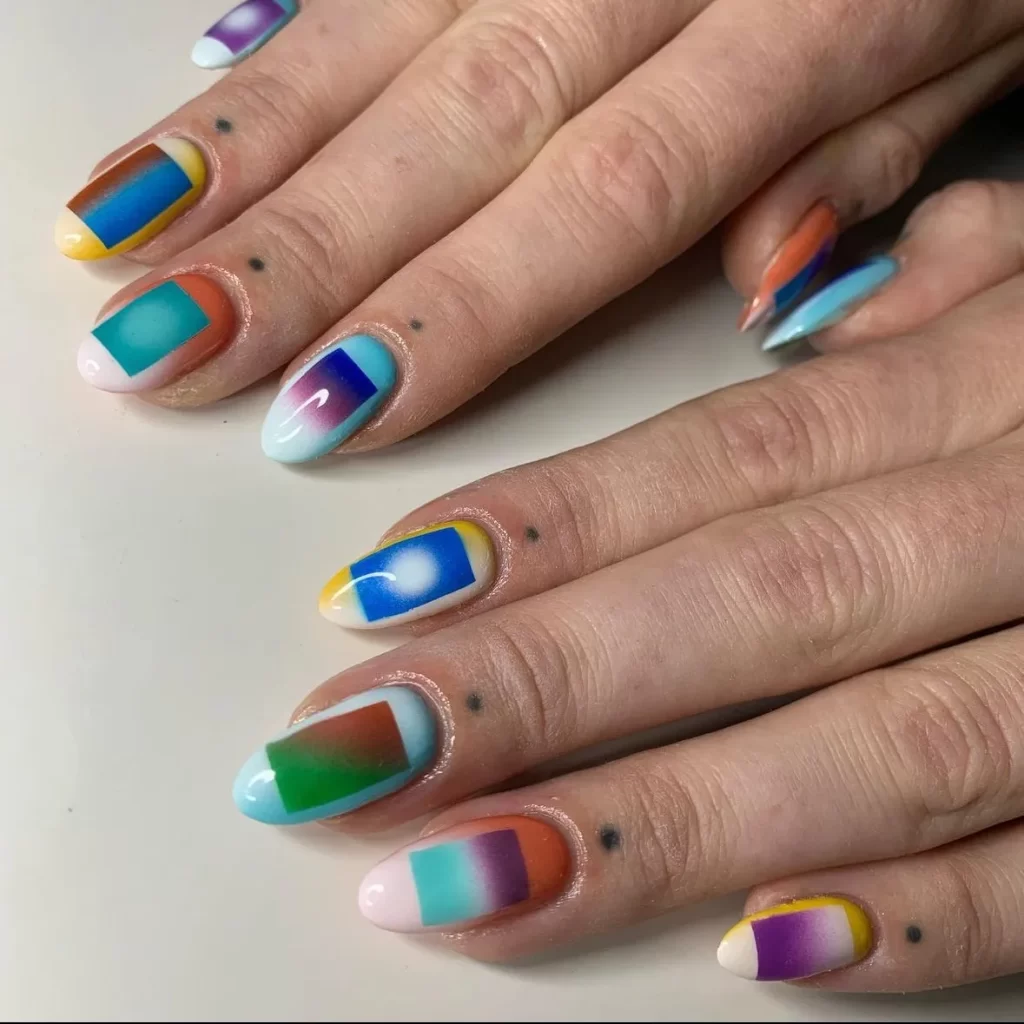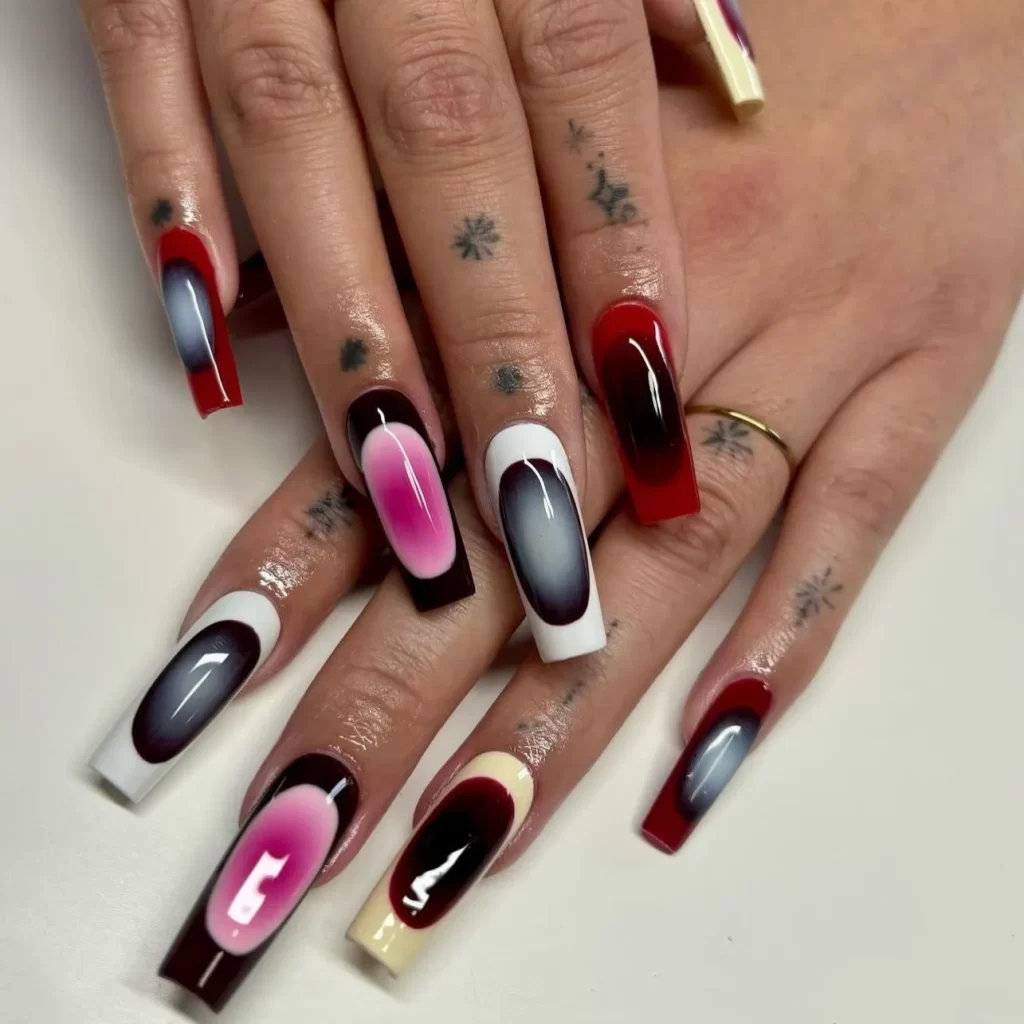The Unexpected Beauty Muse of Nail Art Ever since Thomas Edison created the incandescent lightbulb in 1880, illumination has been the main function of electric light. That is, until the arrival of artist James Turrell, who created unexpected effects by manipulating light through shape and color. Rapper Kanye West became enamored with Turrell’s artwork when he received a MacArthur “Genius Grant” in 1984. However, a new generation, including myself, is discovering Turrell’s work via Pinterest and Instagram. Turrell has toured across 29 countries. Taking note, nail artists are shifting his artwork from the bulb to the nail bed.
“Turrell uses the architecture of buildings and shapes that create shadows, depth, and contrast,” explains nail artist Danielle Salvoski, who works out of California and specializes in creating unique press-ons. She views Turrell-inspired nail art as a logical development of the summertime aura nail trend (which she also influenced). But she didn’t make a set of her own until a client sent her a mood board on Pinterest featuring twenty pieces by Turrell.
Salvoski used shades of violet, blue, and pink to evoke organic patterns and replicate Turrell’s discovered light, emulating works like Skyspace Lech (2018). She began by working on her iPad before selecting up her brushes and polish. Salvoski remarks, “I wanted to do something that was outside the box, but James Turrell was also a huge inspiration.” The end product was a nine-hour creation that was a masterwork of texture, dimension, and three-dimensional labor.
In addition to being a theme in Turrell’s artistic creations, light is also fundamental to his personal religion. According to Dr. Helen Meads in her book The Quaker Meaning of Light (and James Turrell’s work), Turell is a practicing Quaker and believes that light has the “connotation of a transcendent power (as a euphemism for Christ or God) or with the connotation of immanent intentionality (which others might understand as prayer).”
Light also undergoes metamorphosis in nail art The Unexpected Beauty Muse of Nail Art
In order for gel polish to harden and consecrate its final shape, photoinitiators in the polish absorb UV light. According to Vancouver, British Columbia-based nail specialist Daron Wood, the reason behind the appeal of the Turrell-inspired nail design is its subtle simplicity.
“The main reason his art works well for nail art is its simplicity,” says Wood. “It’s also a fairly universal design that works with almost any color scheme and fits on nails of almost any size or shape.”
The countless variations can be applied using gel, hand painting, or airbrushing—which is Wood’s favorite technique. Unexpectedly, teal and red, army green and pink, and blue and orange are some of her particular favorite color pairings. These are essentially variants on complementary hues.
The procedure is as follows: airbrush a gradient, cure the nail under a UV lamp, apply a stencil, airbrush a separate gradient, peel, topcoat, and cure, and voilà, you have color-fading gradients. Wood remarks, “It looks very dynamic but is quite simple.” She also offers stencils for sale online, although tape or stickers can provide a similar appearance with clean lines.
There is nothing new about the relationship between art and nail art—Mona Lisa portraits, a view of Monet’s Water Gardens, etc.—but according to Woods, there is rising hostility between the two forms of expression, a certain gendered disdain because one is regarded as superior to the other.


“I now see nail art getting more recognition, but frequently still under the tone of ‘wow this is actually art,’ as photoshoots and ads focus more on nails. As she points out, even the creations made by many walk-in stores require artistic ability and meticulous attention to detail.
As a craft, nail art has actually been developing throughout the years, actively challenging and upending patriarchal ideas that nail art is only cosmetic and not true art. And just as Turrell would wish, for some, it’s also been a means to be and find the light.
Leave a Reply